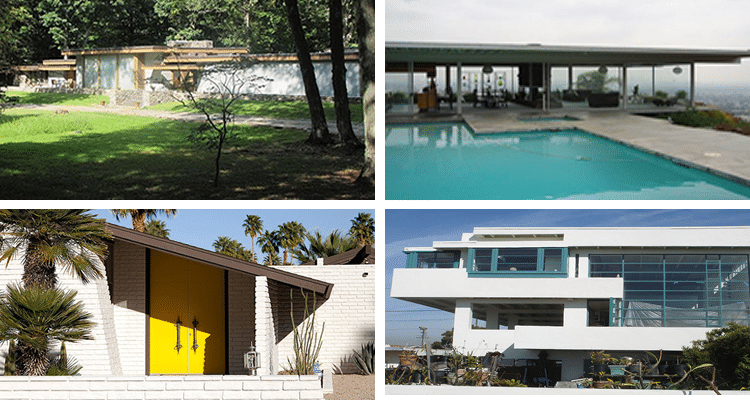During the 20th century, architects turned their attention from traditional designs to more original aesthetics. While many Modernist movements capture this interest in the experimental, mid-century modern architecture has resonated over decades to remain a popular style today.
Though inspired by the unprecedented designs of Frank Lloyd Wright and the avant-garde approach of Bauhaus artists, Mid-Century Modern put a novel spin on architecture. Here, we explore the groundbreaking genre, highlighting its unique look and key characteristics.
What is Mid-Century Modern?

Photo: Carol M. Highsmith via Wikimedia Commons, Public domain
Mid-century modern denotes a style of design that was popularized from the 1930s through the 1960s. Characterized by a contemporary, seemingly futuristic aesthetic and an emphasis on function, the mid-century modern movement influenced many types of design. These include interior, product, industrial, and graphic design, as well as urban planning and architecture, which remains the most well-known mid-century modern example.
Originating in Europe, this style was brought to America by Marcel Breuer, Walter Gropius, and Ludwig Mies van der Rohe, architects who also played key roles in the Bauhaus movement.
Defining Features of Mid-Century Modern Architecture
Most mid-century modern homes showcase three predominant characteristics: a clean, minimalist aesthetic, an emphasis on bringing the outdoors in, and the presence of angular structures.
Minimalist Aesthetic
In the middle of the 20th century, many artists began working in an abstract style, re-imagining traditional art and pioneering a new aesthetic. This interest in abstract forms is also present in the architecture of the time, as demonstrated by mid-century modern’s minimalist appearance.
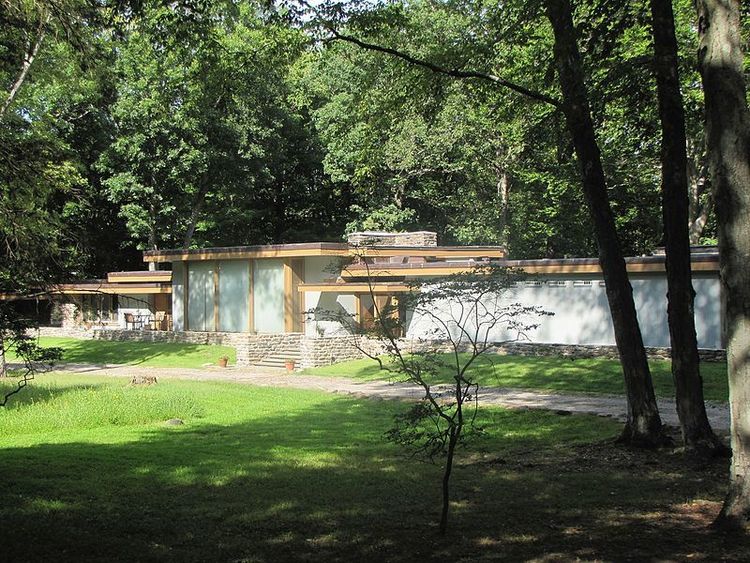
Photo: Zachary Groz (Own work) via Wikimedia Commons, CC BY-SA 3.0
Flat planes, clean lines, and little ornamentation characterize both the exteriors—which often feature monochromatic brickwork and pops of color—and the matching interiors of mid-century modern homes.
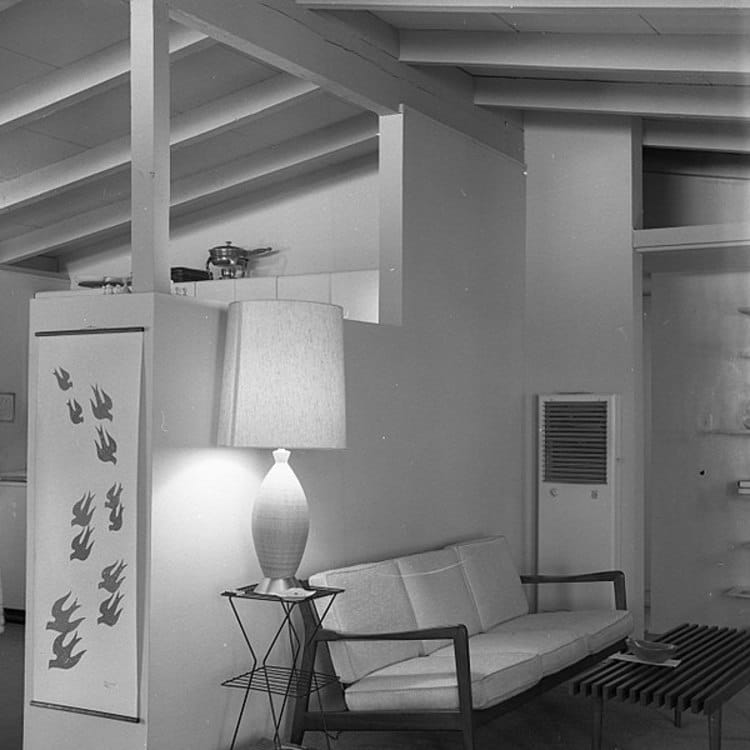
Photo: BeenAroundAWhile at en.wikipedia via Wikimedia Commons, GFDL or CC BY-SA 3.0
This no-fuss approach to design exhibited both the movement’s unique aesthetic and its focus on functionality.
Emphasis on the Outdoors
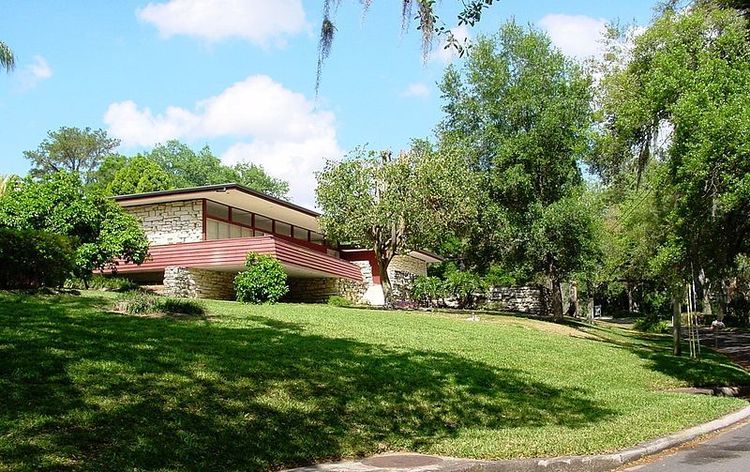
Photo: Grant Rimbey (Own work) via Wikimedia Commons, Attribution
Another key characteristic of the mid-century modern house is its relationship with nature. Architects working in this style often incorporated large windows and open floor plans into their designs, which provided scenic views and let in lots of light. Additionally, sliding glass doors enticed and encouraged residents to go outside and explore their surroundings.
Angular Structures

Photo: Caroline Culler (User:Wgreaves) (Own work) via Wikimedia Commons, CC BY-SA 4.0
To showcase their unmistakably modernist approach to everyday architecture, mid-century modern architects employed geometric forms and asymmetrical compositions in their designs. Unlike structures built in popular preceding styles—including Beaux-Arts and Arts and Crafts—mid-century modern homes exhibit little historic influence and lack visual formality.
Functional Design
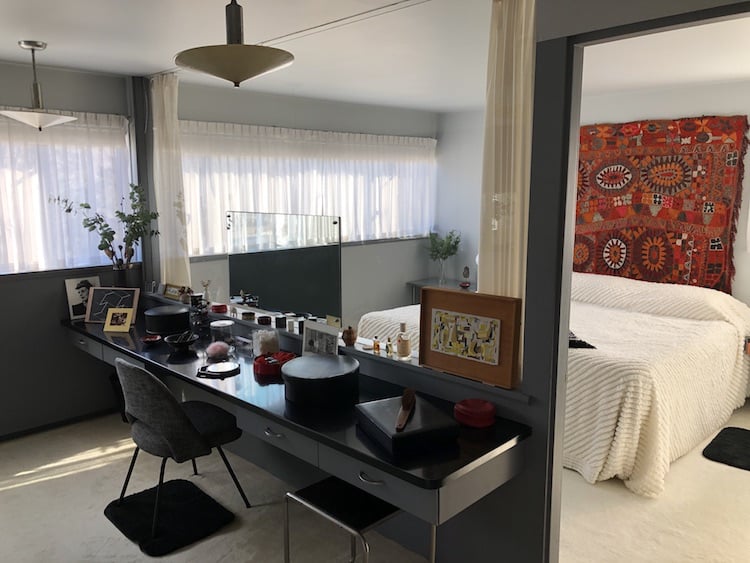
Master bedroom of the Gropius House (Photo: SHendry11 via Wikimedia Commons, CC BY-SA 4.0)
The interior of mid-century modern homes was equally as important as the exterior. Inside, the emphasis is placed on functionality, meaning all aspects of the design are meant to make life easier and more efficient. In keeping with the other characteristics, the interior tends to be minimalist and Scandinavian in appearance.
Key Examples
Gropius House by Walter Gropius
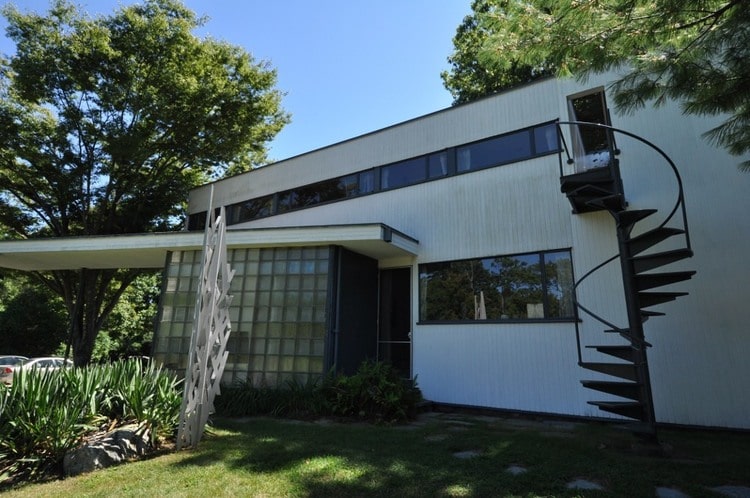
Photo: Magicpiano (Own work) via Wikimedia Commons, CC BY-SA 3.0
Located in Lincoln, Massachusetts and built in 1938.
Lovell Beach House by Rudolph Schindler
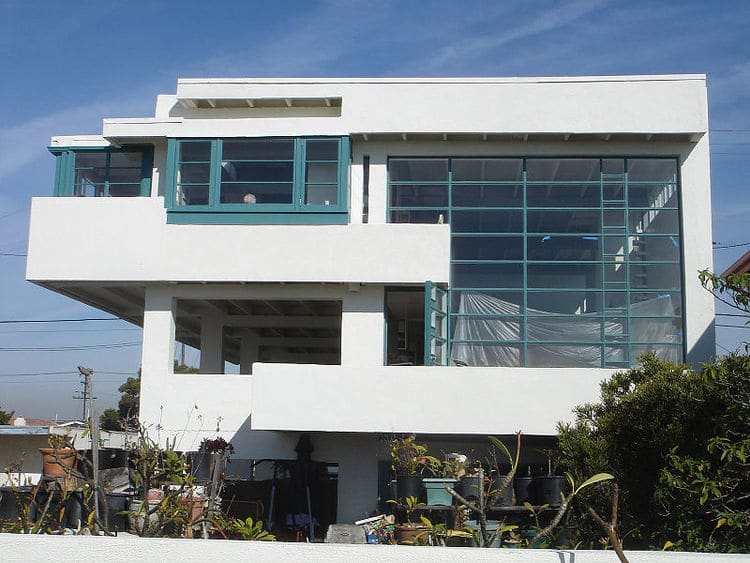
Photo: ikkoskinen (Lovell House, Newport Beach #3) via Wikimedia Commons, CC BY 2.0
Located in Newport Beach, California and built in 1926.
Eames House, Case Study House No. 8 by Charles Eames and Ray Eames

Photo: Gunnar Klack (Own work) via Wikimedia Commons, CC BY-SA 4.0
Located in Pacific Palisades, California and built in 1949.
Farnsworth House by Ludwig Mies van der Rohe

Photo: Victor Grigas (Own work) via Wikimedia Commons, CC BY-SA 3.0
Located in Plano, Illinois and built in 1951.
Schröder House by Gerrit Rietveld
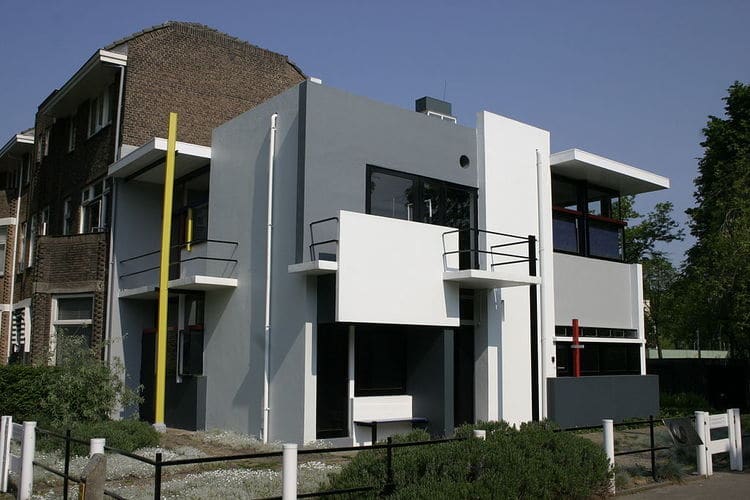
Photo: Andreas 2309 (Own work) via Wikimedia Commons, CC BY-SA 3.0
Located in Utrecht, Netherlands and built in 1924.
Stahl House by Pierre Koenig

Photo: Ovs at English Wikipedia (Own work by the original uploader) via Wikimedia Commons, Public domain
Located in Los Angeles, California and built in 1960.
Glass House by Philip Johnson
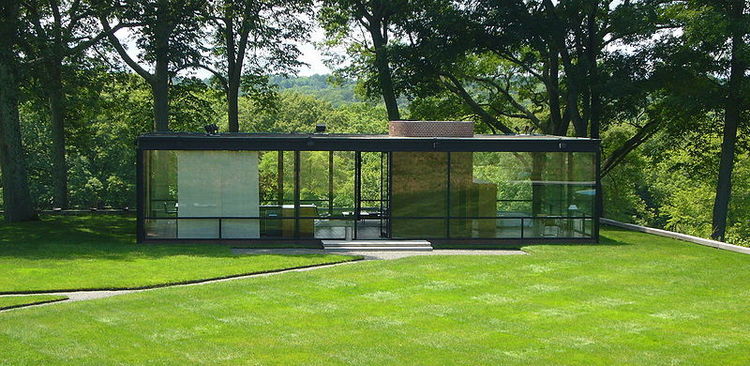
Photo: Staib (Own work) via Wikimedia Commons, CC BY-SA 3.0
Located in New Canaan, Connecticut and built in 1949.
Frequently Asked Questions
What defines mid-century modern?
Mid-century modern denotes a style of design that was popularized from the 1930s through the 1960s. Characterized by a contemporary, seemingly futuristic aesthetic and an emphasis on function, the mid-century modern movement influenced many types of design.
What are the characteristics of mid-century modern architecture?
Most mid-century modern homes showcase three predominant characteristics: a clean, minimalist aesthetic, an emphasis on bringing the outdoors in, and the presence of angular structures.
This article has been edited and updated.
Related Articles:
Architecture 101: 10 Architectural Styles That Define Western Society
Delightful Birdhouses Modeled After Historic Architecture
Beach House Designed by Frank Lloyd Wright Is Available on Airbnb for $150 A Night

